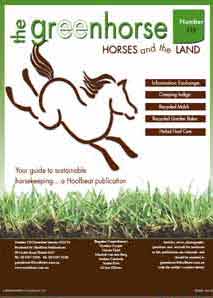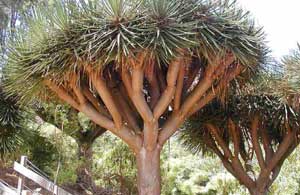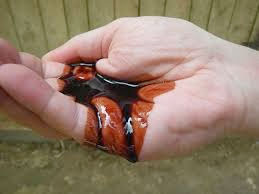The Green Horse section provides practical information on managing environmentally sustainable horse properties, readers stories and tips, as well as advice and articles from equestrian experts in their fields.
February/March 2016
Vol 37 No 5
In this issue of The Green Horse you will find the following articles:
Information Exchange
- a reader's story on DIY Electric fence.
Stagger Weed
Reader and Equine Landcare member, Linda Starcevich, has Stagger Weed (Stachys arvensis) on her property and, while not much is known about controlling it, Linda has written her personal account on managing this common and toxic weed.
Bushfire Recovery - with bushfires occurring across Australia they are constantly in the news...but what happens to the environment during the fire and how does it regenerate back to a heallthy horse property?
This article looks at ways to overcome the fact that fires burn the plants and organic material that naturally stabilise the soil, making it more prone to erosion and weed infestation.
The Natural Paddock - Property design and aligning horse care management, by default, influences social opportunities and routine (including feeding habits) of horses. When a horse’s environment and routine doesn’t accommodate natural behaviours, many health and behavioural problems can result.
Acute Colitis Solution in a Tree
Solar Arena Lighting
...pros and cons
WIN A YEAR'S SUBSCRIPTION...
share your equine related recycling ideas and each issue one reader will win.

|
  
  

TREE REMEDY FOR ACUTE COLITIS
The answer to Acute Colitis in horses may be in a tree! Not just any old tree; Crofelemer is an active pharmaceutical ingredient isolated and purified from the Croton lechleri tree, native to South America.
Sangre de Grado, or ‘Dragon’s Blood’, the tree is sustainably harvested for it’s latex (red-orange sap) for medicinal purposes and constituents for a number of products, including female cosmetics and gastro-intentional treatments in humans. Harvest methods include felling with a replacement regime; or tapping, cutting in the bark of the tree and collecting the sap or latex.
Jaugaur Animal Health announced in December that a pilot study in the suitability of Crofelemer for Horses, undertaken in conjunction with Louisiana State University, has produced positive results. This research is the first step toward the development program for a Crofelemer drug product.
Colitis is defined as inflammation of the large bowel, a condition that can affect adult horses as well as foals. It can cause sudden, massive fluid loss and severe electrolyte imbalances that can result in death. Acute colitis often occurs when bacteria normally present in the gut are activated by stress, or when the bacterial pathogen, Neorickettsia risticii, is ingested, causing Potomac Horse Fever. Stress (e.g., transport changes in daily routines, illness, surgery, racing), recent diet changes, recent antimicrobial administration, and non-steroidal anti-inflammatory drug therapy can also put horses at risk for acute colitis.

Dragons blood describes the rich, red sap
of the tree.
READER'S STORY- DIY Electric Fence
Dear Green Horse,
Having recently moved to a rental property not well set-up for horses, we found the ringlock fencing a little too low and tired in some spots, but otherwise a perfectly functioning fence. We also required somewhere to contain our dogs during the day while at work. The simplest answer seemed to be a basic electric fence.
At first the objective was to ‘make do’ (a quick, cheap and easy solution) until something more permanent could be arranged, but we’ve since found that it’s more than sufficient and we can take the easily dismantled materials with us when we move on.
First we had to section off the top of the paddock to exclude a fruit orchid and where the majority of the sagging fencing is, so we simply banged in some long star pickets approximately 2m apart using a borrowed picket slammer. For these, we used standard pin insulators that clip on to star-pickets (alternatively, a bit of PVC tubing wired on seems to work well).
Next we went around the remainder of the perimeter installing ‘out rigger’ style insulators that would ‘hold’ the fencing on the inside of each post and corners. The added benefit of this is that the electric fencing sits 30cm inside from the existing fence which means our horse doesn’t get close enough to paw near the fence and risk getting a foot tangled in the ring-lock.
For anyone who hasn’t used outriggers, the porcelain insulator slides into the main fold of the rigger and then the two off-shooting wires wrap around the existing fencing. Our paddock is approximately an acre and it took two of us less than half an hour to install them.
We ran two strands of ‘white tape’ (the cheapest option) on the inside of the fence: the top one at just above my horse’s chest height, and the bottom slightly lower than the dog’s chest height. Along the star-picket ‘temporary’ fence we ran a third strand in the middle to stop the dogs jumping through. It did take two of us to get the tape taught. At each end (either side of the gate), we simply tied the tape around black plastic pin insulators. We used more white tape (and basic knots) to ‘join’ the strands. Tip: ensure the tape is tied tight so the wire filaments are touching.
Lastly, we used the same method to attach the top fencing line to the wire at the bottom of the power unit (different units can power different lengths, so ask before your buy!). The ‘earthing’ connection was attached to a small star-picket and banged into the ground as deep as possible – which at first wasn’t sufficient due to hardened clay! The power box was connected via extension cords to the nearby shed. However, we will be running these through protective piping for a more semi-permanent solution.
We were fortunate to be able to borrow a tester to ensure the fence was carrying sufficient charge before we relied on it. However, these are easily bought from general farming or hardware stores. Overall, the fence took us less than two hours and has now withstood several months. |